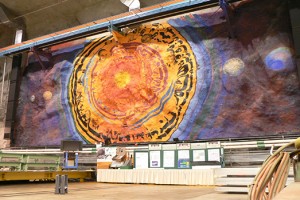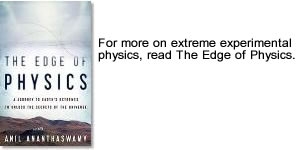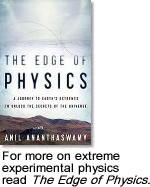Posts from — June 2010
Neutrinos continue to astound

It’s only been a couple of weeks since we heard of the OPERA experiment detecting the first-ever oscillation of a muon neutrino into a tau neutrino. Now, the MINOS experiment at FERMILAB has announced that they have seen a difference in the way neutrinos and anti-neutrinos oscillate (see story in New Scientist).
Here’s what’s happening in the experiment. A source of neutrinos and anti-neutrinos at FERMILAB is beaming these particles towards two detectors. One is the “near” detector, close to the source. The other is 700 km away, inside an abandoned iron mine in Soudan, Minnesota (which is also the site of the CDMS-II experiment, which is looking for dark matter. For pictures of trip to mine, see here.).
According to our best understanding of neutrino physics, both neutrinos and anti-neutrinos should oscillate in a similar manner: meaning, they should change from muon neutrinos to tau neutrinos and from muon anti-neutrinos to tau anti-neutrinos in much the same fashion.
As it happens, the MINOS detector in Soudan is seeing a difference in the way neutrinos and their anti-matter counterparts are oscillating.
If this result is substantianted by further data or by other experiments, it could be a big breakthrough. Somewhere in this lie clues to explain the matter-antimatter asymmetry in our universe. What happened to all the antimatter that must have been produced in the early universe?
It’s possible that the discrepancy in how neutrinos and anti-neutrinos oscillate, or the difference in the way they interact with 700 km of Earth on their way from FERMILAB to the Soudan mine, could enlighten us about new physics, and shed more light on the mystery of the missing antimatter.
June 17, 2023 1 Comment


